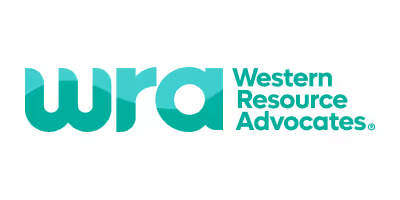If you work in climate, navigating the world of communications, and marketing can be intimidating. On the flip side, if you’re a PR professional without a background in environmental science or sustainability, determining where to start your climate journey and how to learn the science is tricky.
That’s why the DG+ team pulled this guide together: We want to help you level up your climate knowledge and build your PR and marketing skills leading up to COP29 and a quickly approaching new year. As communication professionals, it’s important to understand your client and your field as deeply as possible in order to best serve their needs. As environmental professionals, knowing how to explain your company’s purpose and technology is vital to promoting your story and expanding your audience.
We want to help you be the best of both worlds: a climate communicator. Read on for our recommendations.
Note: Author’s favorite recommendations are starred
Communications and marketing
Developed by a climate tech VC firm, an electrification nonprofit, and a climate-centered strategic communications firm, this guide is aimed at early-stage renewable energy and cleantech startups. The guidebook contains resources ranging from messaging strategies and digital content development to reporter engagement and government affairs; it also includes a collection of templates for key documents like press releases and social media toolkits. This is a particularly valuable resource for climate startups just starting to dip into the communications world.
The Climate Tech Marketing report and newsletter from the Climate Hub are both aimed at marketing professionals working with climate tech clients. The report dives into the B2B cleantech marketing landscape and shares what kind of messaging, voice, tone, and more is working — and what’s not. The weekly newsletter delivers bitesize snippets of wisdom to your inbox; it’s a quick read, but a helpful one.
“The Anti-Greenwash Guide” was developed following Creatives for Climate’s Ethical Agency summit and lays out strategies for agencies of all sorts and sizes to avoid greenwashing. It’s a must-read for anyone trying to navigate anti-greenwash regulations, position their brand as a sustainability leader, and use marketing as a sustainability solution.
Created by two Aspen Future Leaders and climate communications professionals, “Communications for the New Climate” offers a roadmap for environmental companies, nonprofits, and activists alike to amplify their messages, boost earned media coverage, and highlight solutions. The guide resituates classic communications and PR wisdom into a climate context and updates it to be applicable in the current landscape.
Other Recommended Reading
Climate science and policy
A decade after its publication, Naomi Klein’s exposé of the economic systems exacerbating the climate crisis is as poignant as ever. The book — and later film — delves into how our economy and political environment have worsened climate change and shaped the debate around how to fix it while also sharing success stories of what reshaped, climate-positive economics can look like. “This Changes Everything” will break your mind and put it back together in the best way possible: with a fire for change and hope for a better future. More than any other book (other than “The Omnivore’s Dilemma,” see below), Klein’s critique cemented my need to work in climate.
Fossil fuel propaganda is everywhere, the American climate debate isn’t as polarized as we think, and much of our current discourse around climate change is false and self-reinforcing. Guenther’s book unpacks six key words and phrases integral to our environmental conversations and reframes them in a way that highlights their origins, dismantles complicit ideologies, and mobilizes them to work against the type of fossil fuel propaganda they were created to be. Her climate justice-centered approach to communications leaves you reflecting long after you finish “The Language of Climate Politics.”
“Electrify everything.” Saul Griffith, the founder of Rewiring America and many clean energy companies, created this phrase. In “Electrify,” he builds out a roadmap to total electrification, where he explores the feasibility of widespread decarbonization and lays out how electrification can be done in an environmentally, economically, and socially sustainable way. Griffith calls for using small innovations to produce widespread change; his optimistic but realistic, fact-based plan provides a clear image of how an electrified future could look.
In “The New Climate War,” Michael Mann — also known as the “hockey stick guy” following his publication of a monumental atmospheric science paper — unpacks how Big Oil’s targeted, well-executed marketing campaigns against climate action continue to impede political and corporate climate progress. He deftly makes the case for a revised version of the Green New Deal, breaks down carbon pricing into bite-sized nuggets, and crafts a scalable strategy against climate denial and doomerism.
We’ve known for 25 years what needs to be done to stop climate change. We haven’t done it. Nathaniel Rich’s groundbreaking account of “the decade we almost stopped climate change” explores how a small but mighty group of scientists, activists, and strategists almost shifted the political needle to take action during the 1980s and what forces stopped them. Though “Losing Earth” was originally published as an entire edition of the New York Times Magazine, Rich’s expanded version goes even further to describe what convergence of extraordinary circumstances led us to the present moment. It’s a maddening, eye-opening, and hopeful tale all at once — it’s worth the read.
A sustainable food systems classic, Michael Pollan’s The Omnivore’s Dilemma starts with one simple question: What should I eat for dinner? Throughout his book, Pollan follows four meals from start to finish — ranging from a fast food burger to a meal he foraged himself — and explores their social, economic, environmental, and health impacts. Pollan’s first-person POV coupled with a journalistic wit and deep-cutting insights about the state of the American food system make “The Omnivore’s Dilemma” a read you won’t forget. One of my favorites on this list!
Others on my To Be Read list:
If you have any other recommendations, feel free to shoot us an email! We hope you feel more confident and able to navigate the climate communications landscape.
Looking to level up your company’s climate communications efforts? Contact us for more information about our PR and communications offerings, and sign up for our newsletter here.



























